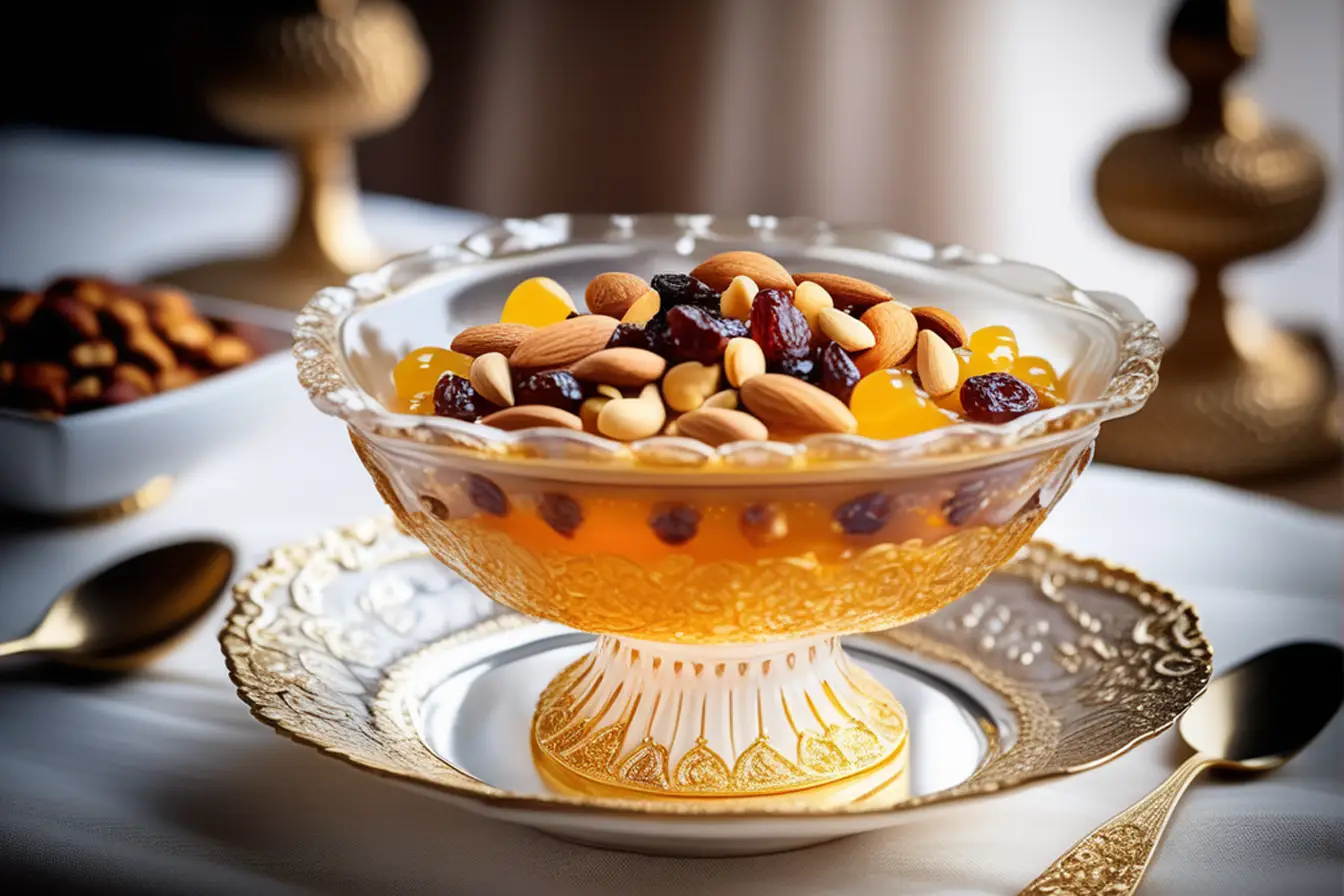A Traditional Hijazi Dish
Dibyaza is a baked dessert, associated with festivity and joy. In Makkah and Madinah, it is usually served on the first day of Eid Al-Fitr and Eid Al-Adhha at the breakfast table after the Eid prayer.
Dibyazah dates back to ancient times. It is a popular traditional dish in Hijaz, especially in Makkah and Medinah. It is believed that it was originally developed from Ottoman or Egyptian desserts since there are similar Ottoman and Egyptian sweets. Probably it might have been a combination of both.
Dibyazah Down the Generations
Dibyazah is currently made of dried apricot dough, raisins, dates and sugar, dried dates (qiladah), dried fruit such as figs and raisins, and luxurious nuts such as almonds, cashews, pistachios, pine nuts and hazelnuts.
In the past, dibyazah was consumed by the wealthy because of the costly ingredients, especially the nuts. Over time, it has become affordable for everyone. Home-made dibyazah differs from one household to another. It is served as a standalone dish or with shuraik bread.
Dibyazah at Eid
The smell of dibyazah precedes the sighting of the Eid moon.
Dibyazah is an essential dish at the Hijazi breakfast table on the morning of the day of Eid Al-Fitr. It has a high nutritional value, enlivens the body after the Ramadan fast and helps one celebrate the Eid lively.
It is widely prepared by most households for the Eid feast. The delicious smell of the dibyazah is found in most homes during the last two days of Ramadan before Eid is formally announced.
Served Hot
The process of making dibyazah involves lightly roasting the nuts in a little ghee, then mashing the slices of apricot, and finally adding nuts and dried fruits and finally dressing them with golden raisins and dried figs.
It can be served either hot or cold.
Where Can I Try Dibyazah?
Dibyaza can be found in traditional popular markets and confectionary stores in Madinah and Makkah.
